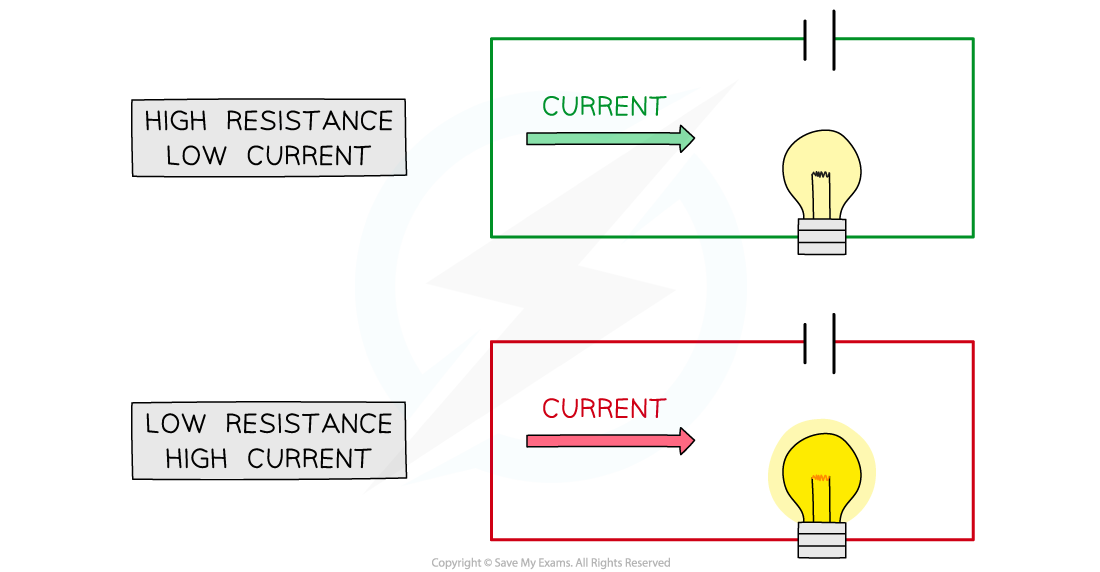Resistance (Edexcel IGCSE Physics)
Revision Note
Did this video help you?
Calculating current, resistance & potential difference
Resistance is defined as
The opposition of a component to the flow of electric current through it
Resistance is measured in units of ohms (Ω)
A resistance of 1 Ω is equivalent to a voltage across a component of 1 V which produces a current of 1 A through it
The resistance of a component controls the size of the current in a circuit
For a given voltage across a component:
The higher the resistance, the lower the current that can flow
The lower the resistance, the higher the current that can flow
All electrical components, including wires, have some value of resistance
Wires are often made from copper because it has a low electrical resistance
This is why it is known as a good conductor
Comparing current and resistance

A greater resistance means there is a lower current and vice versa
The current, resistance and potential difference of a component in a circuit are calculated using the equation:
voltage = current × resistance
Where:
V = voltage, measured in volts (V)
I = current, measured in amps (A)
R = resistance, measured in ohms (Ω)
This equation is sometimes called Ohm's law
It can be rearranged with the help of the following formula triangle:
Voltage current resistance formula triangle

Formula triangle for the voltage, current and resistance equation
Check out this revision note on speed, distance and time if you need a reminder on how to use formula triangles
Worked Example
Calculate the voltage across a resistor of resistance 10 Ω if there is a current of 0.3 A through it.
Answer:
Step 1: List the known quantities
Resistance, R = 10 Ω
Current, I = 0.3 A
Step 2: Write the equation relating resistance, potential difference and current
Step 3: Substitute in the values
V = 0.3 × 10 = 3 V
Examiner Tips and Tricks
In exam questions, the resistance of the wires, batteries, ammeters and voltmeters are always assumed to be zero (in the case of voltmeters, they have extremely high resistances so that current does not flow through them, and this has a negligible effect on the overall resistance of the circuit)

You've read 0 of your 5 free revision notes this week
Sign up now. It’s free!
Did this page help you?
